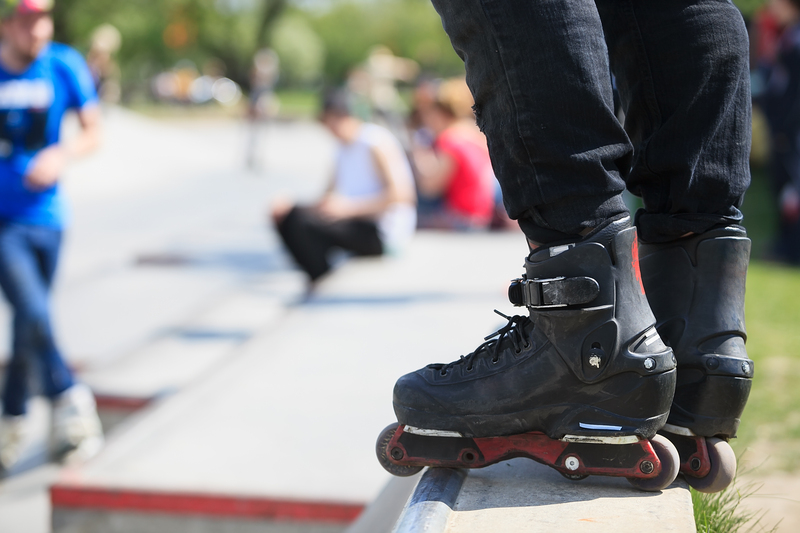Streamline Your Move with Expert Packing Strategies
Moving doesn't have to be overwhelming or stressful. With the right expert packing strategies, you can turn a complicated process into a smooth, efficient, and even pleasant experience. Whether you're relocating across town or the country, the way you pack your belongings plays a crucial role in the entire moving process.
In this comprehensive guide, you will discover practical, time-tested techniques and packing tips that not only protect your items but also save you time and effort. Streamlining your move isn't just about saving time; it's also about safeguarding your cherished possessions and ensuring an easy transition to your new home.

Why Proper Packing is Essential for a Smooth Move
Preparation is key when it comes to moving. By taking advantage of efficient packing strategies, you significantly minimize the risk of damage, reduce moving costs, and alleviate stress. Here are some reasons why investing time to learn expert packing solutions is absolutely worth it:
- Protects fragile and valuable items.
- Reduces the risk of losing or misplacing belongings.
- Helps maximize space in moving boxes and trucks.
- Makes unpacking more organized and manageable.
- Speeds up the entire moving process.
Pre-Packing Steps: Laying the Groundwork for Success
Declutter and Downsize Before You Pack
One of the most effective moving strategies is to start with a clean slate. Take the time to go through your belongings and sort them into categories: keep, donate, sell, or discard. By reducing the items you need to move, you save on packing materials, moving costs, and time. Remember, streamlined packing always begins with decluttering!
- Start Room-by-Room: Break down the decluttering process by tackling one space at a time.
- Be Ruthless: If you haven't used an item in over a year, consider whether it's truly necessary.
- Organize a Yard Sale: Sell items of value you no longer need to fund your move.
Create a Packing Timeline
Having a detailed plan is a hallmark of expert packing. Start packing non-essentials weeks in advance. Reserve daily essentials and frequently used items for last-minute packing. A detailed packing timeline keeps you organized, minimizes last-minute chaos, and ensures nothing gets left behind.
Gather the Right Packing Supplies
To streamline your move, arm yourself with the best packing materials. The right supplies will protect your possessions and make both packing and unpacking effortless. Expert movers recommend the following essentials:
- Different sized boxes: Use small boxes for books and heavy objects, medium for kitchenware, and large for linens or clothing.
- Bubble wrap and packing paper: Essential for wrapping fragile or breakable items.
- Packing tape: High-quality tape secures your boxes and provides extra support.
- Markers and labels: Clearly label every box to identify contents and destination rooms.
- Stretch wrap: Keeps furniture drawers and doors in place and protects surfaces.
Room-by-Room Expert Packing Strategies
Living Room and Fragile Items
Your living space likely contains some of the most unique, oddly shaped, and fragile items in your home. Streamlining your move with targeted packing tips for these possessions is a must:
- Wrap items individually: Use bubble wrap or packing paper for delicate items like vases, picture frames, and electronics.
- Fill empty spaces: Use towels or old clothing to cushion and stabilize breakables within boxes.
- Disassemble furniture: Where possible, take apart large furniture to make moving easier and reduce the risk of damage.
Kitchen and Dining Room Packing Techniques
The kitchen is notorious for its fragile items and oddly shaped gadgets. Here's how to pack your kitchen with professional efficiency:
- Plates and glassware: Stack plates vertically and wrap glasses individually. Use dish packs if available.
- Small appliances: Pack in their original boxes. If unavailable, use plenty of cushioning and label clearly.
- Seal food items: Avoid packing perishable or opened food, but seal non-perishables securely to prevent spills.
Bedroom and Clothing
A truly streamlined move considers the best ways to pack clothing and personal items:
- Use wardrobe boxes: These allow you to move clothes directly on hangers, saving time unpacking.
- Seal seasonal clothes: Store out-of-season items in vacuum-sealed bags for extra space.
- Pack jewelry separately: Use small boxes or pill containers to avoid tangling or loss.
Bathroom and Toiletries
Prevent leaks and spills: Tape the lids of bottles and place liquids in plastic bags. Pack medicine and daily essentials in a separate, easily accessible box.
Pro-Level Packing Techniques to Streamline Your Move
Maximize Space in Every Box
Organized packing means fewer boxes and a more efficient move. Here's how experts optimize packing space:
- Layer strategically: Place heavier items like books or dishes at the bottom, fill spaces with lighter pieces.
- Mix and match items: Pair soft items with breakables for added protection.
- Don't overload boxes: Aim for a manageable weight, ideally under 50 lbs per box to prevent injury.
- Fill to the top: Prevent boxes from crushing by filling all empty spaces with paper, towels, or clothing.
Label Boxes Clearly and Intuitively
Every box, no matter how small, should be labeled with its contents and destination room. For extra organization, color-code your labels by room or priority. This makes loading, unloading, and unpacking straightforward and quick.
Create an Essentials Box
Packing an "essentials" box will help streamline your first night in your new home. Include necessary toiletries, chargers, a change of clothes, important documents, basic kitchenware, and anything you'll need immediately. Keep this box with you rather than on the moving truck.
Packing Mistakes to Avoid
- Putting off packing until the last minute: Procrastination leads to rushed packing, breakage, and forgotten items.
- Failing to label boxes: This results in confusion, lost time, and misplaced belongings.
- Ignoring weight limits: Overloaded boxes risk breaking and can result in injuries or damage.
- Using the wrong materials: Low-quality boxes or inadequate cushioning leave items vulnerable.
Technology-Assisted Packing Strategies
Modern moves are easier with the help of moving and inventory apps. Consider using apps to:
- Log and photograph the contents of each box.
- Track items as they're packed and loaded.
- Generate detailed moving checklists and schedules.
- Coordinate tasks with family members or roommates.
You can also consult online tutorials for packing tricky or valuable items, further streamlining the process with expert guidance at your fingertips.
Hiring Professional Packers vs. DIY Moving
If time is tight or you have high-value, difficult-to-pack belongings, hiring professional packers can be a smart move. Expert movers bring experience, specialized materials, and efficiency that simplifies even the most daunting moves. However, if you prefer to pack yourself, applying these expert packing strategies will help you achieve professional results.
What to Expect from Professional Packers
- Packing typically completed in a day for most homes.
- All items wrapped, labeled, and inventoried.
- Specialized materials for fragile or high-value items.
- Cost is higher but sometimes offset by risk reduction and time savings.
Unpacking: Making the Move-In Process Seamless
Your move isn't truly streamlined until you're comfortably settled in your new home. Here's how to unpack efficiently:
- Start with the essentials box: Set up bedding, toiletries, and basic kitchen needs first.
- Unpack room by room: Tackle one room at a time, following your labeling system.
- Flatten, recycle, or donate packing materials as you go: This keeps your new space organized and clutter-free.

Additional Packing Tips to Streamline Your Move
- Take photos of electronics: Before disconnecting wires and cables, snap photos to help with reassembly.
- Keep hardware in labeled bags: For items you need to disassemble, store screws and bolts in zip bags taped directly to the item or labeled clearly.
- Use linens and towels for padding: Save on packing material and give your linens a functional second use.
- Pack suitcases with heavy or valuable items: Rolling luggage is made for transporting weight.
- Don't forget to defrost your refrigerator: Do this at least 24 hours before moving.
Conclusion: Streamline Your Move with Expert Packing Solutions
By following these expert packing strategies, you'll transform your next move into a highly organized, stress-free experience. With careful planning, the right materials, and a room-by-room approach, even the largest moves become manageable. Whether you're undertaking a DIY move or enlisting professional packers, using these tips ensures your cherished possessions arrive safely and your new homecoming is smooth and joyful.
Ready to streamline your move? Begin your journey today with these proven, expert packing tactics -- and make moving day a success!






